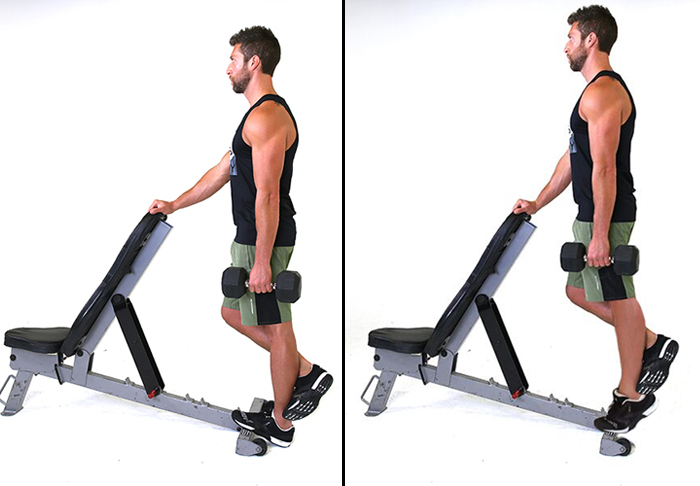How to do a Single-Leg Calf Raise

Single-leg calf raises are a great exercise if you’re looking to add muscle and definition to a pair of chicken legs (or to jump higher, reduce your risk of ankle injury, and generally increase your athletic performance).
When it comes to building a stronger lower half, many people hyperfocus on their quads and hamstrings.
But your calves are essential for both facilitating movement and keeping you on your feet, from flexing and stabilizing your ankle to helping to absorb the shock of jarring actions like running or leaping.
And few moves target them more effectively than the standing, single-leg calf raise, which works one calf at a time to iron out muscle imbalances while building size and strength.
Here’s how to do it with perfect form.
Single-Leg Calf Raise: Step-by-Step Instructions
- Hold a dumbbell in your right hand by your side and place the ball of your right foot on a raised surface (the base an inclined bench works well).
- Cross your left ankle behind your right, hold onto the bench with your left hand for balance, and lower your right heel toward the floor (but don’t touch it).
- Rise up on the toes of your right foot as high as you can, giving your right calf an extra squeeze at the top.
- Pause, and then lower yourself back to the starting position. Do equal reps on both sides.
Bonus tip: Avoid the temptation to crank out reps quickly. When you do, your Achilles tendon does the bulk of the work.
Maintaining a slow, controlled tempo ensures that you target your calves.
Single-Leg Calf Raise Tips

Need to make it easier?: Use lighter weight (or no weight at all), or work both legs simultaneously, rising up on the balls of both feet.
Want to make it harder? Use heavier weight.
Target muscles: Calf (gastrocnemius and soleus), as well as the tibialis anterior, which runs along the front of your leg next to your shin.
You can find this move in the ChaLEAN Extreme workout, Lean Circuit 1. Want more basic moves? Click here.
